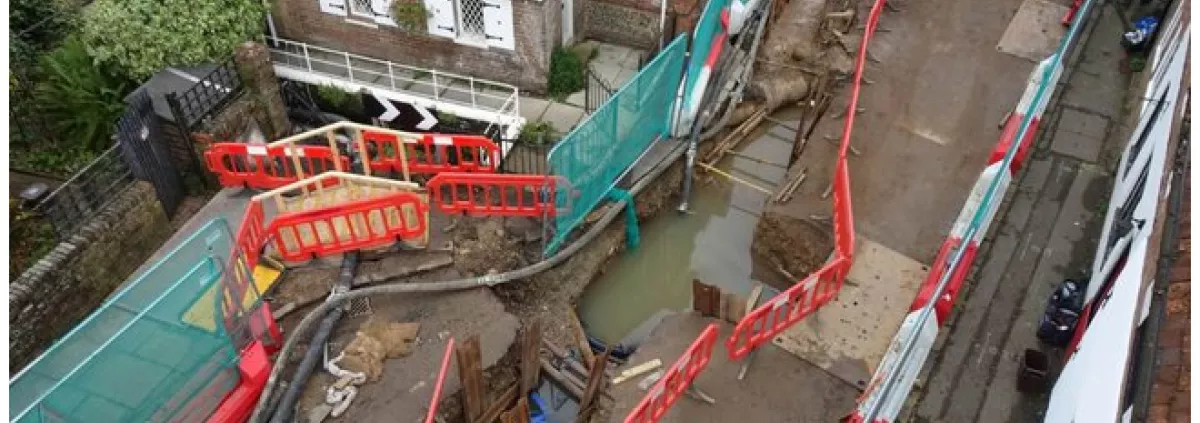AECOM, working in partnership with Buckingham Council are currently undertaking flood management work to help provide additional protection for more than 100 properties in Pednormead End in Chesham. Historically the area is flood prone and the work, being done in two stages, involves installing a new, bigger culvert under Church Street (pictured) as well as property flood protection work.
The project forms part of the Environment Agency six year Capital Programme to better protect 300,000 properties nationally from flooding through a £2.6 billion investment. This is the first project that Buckinghamshire Council is working in partnership with the Environment Agency.
This Property Flood Resilience (PFR) scheme in Chesham showcases how resilience can be delivered for communities which have not yet flooded, through partnership working, innovating best practice, and digital engagement. When complete, the project should reduce flooding damage to local properties and infrastructure, keeping roads clear of flooding during periods of heavy rain and improve the local environment for residents and businesses.
Although PFR is an emerging industry, this scheme highlights the importance of such projects to set precedents for best practice. AECOM's project management on behalf of Buckinghamshire Council from planning stage to construction, has enabled them to provide invaluable insight into the challenges and opportunities presented by a PFR scheme and how to overcome them. For example, AECOM have enabled delivery of PFR on historic buildings and have developed innovative barrier solutions which take into consideration disability needs.
This was only possible through innovating products and processes, using digital engagement solutions, and working in partnership with a range of parties (including heritage specialists, stonemasons, utility companies, contractors, Local Councilors, highway and structural engineers, school facilities management).
AECOM believes PFR is a vital piece of the puzzle in our quest to work together to create a climate resilient world. That there is a need to deliver tangible resilience for communities across the country now due to the increased risk of flooding as a result of climate change. This can only be achieved through working in partnership with multi-disciplinary teams, organisations, and individuals and pushing boundaries of best practice through innovative solutions.
